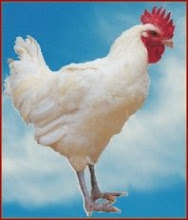 These Old-fashioned Chocolate and Almond Cookies are an absolute delight! They are simple yet sophisticated, and incredibly easy to prepare. The entire recipe is made in the food processor, and bakes in only 12 minutes. The cookies are addictively chewy and packed with flavor. They are almost macaroon-like. I guarantee that once you try them, you will be hooked!
These Old-fashioned Chocolate and Almond Cookies are an absolute delight! They are simple yet sophisticated, and incredibly easy to prepare. The entire recipe is made in the food processor, and bakes in only 12 minutes. The cookies are addictively chewy and packed with flavor. They are almost macaroon-like. I guarantee that once you try them, you will be hooked!This is also a great recipe to use for Passover, as it contains no flour or butter. It is parve by nature and does not force you to have to use matzah meal!
This recipe is a variation of a recipe in the book Paris Sweets by Dorie Greenspan. I have made some slight changes in ingredients (I add salt and vanilla) and cooking time and temperature. I also make my cookies a bit larger.
Amandines au Chocolat a l'Ancienne
Makes about 18 cookies
- 81/2 ounces blanched almonds or almond flour
- 1 cup granulated sugar
- 3 tablespoons cocoa powder (I use Valrhona)
- 1/2 leftover, dried vanilla pod or 1 teaspoon vanilla extract
- 1/2 teaspoon fleur de sel
- 3 large egg whites
Position oven racks to center and preheat oven to 350 degrees. Line 2 baking sheets with parchment paper or silpat.
In the bowl of a food processor, place almonds or almond flour, sugar, cocoa powder, vanilla pod (if using, don't add vanilla extract here), and salt. Turn machine on and process until the almonds are ground and everything is evenly blended. Be sure that there are no large pieces of almond hiding in the mix. With the motor running, add the egg whites (and the vanilla extract if you are using it) all at once. Continue processing until just combined. Be careful not to over process as we do not want to incorporate too much air into the batter. Turn machine off and finish blending with a rubber spatula, being sure to scrape down the sides of the bowl. Transfer batter to a clean bowl.
Using a 1 1/4 inch portion scooper, scoop 9 cookies, evenly spaced, per prepared baking sheet. Bake cookies in preheated oven for exactly 12 minutes. I recommend baking only one sheet at a time to guarantee consistent results. After 12 minutes, remove cookies from oven and carefully slide parchment paper or silpat with the cookies onto a cool counter top. Allow to sit for 5 minutes, and then carefully remove cookies from the paper or silpat and place on a rack to cool completely. Repeat with second pan. After cookies cool completely, they may be stored in an airtight container for up to 4 days. I doubt that they will be around that long!







